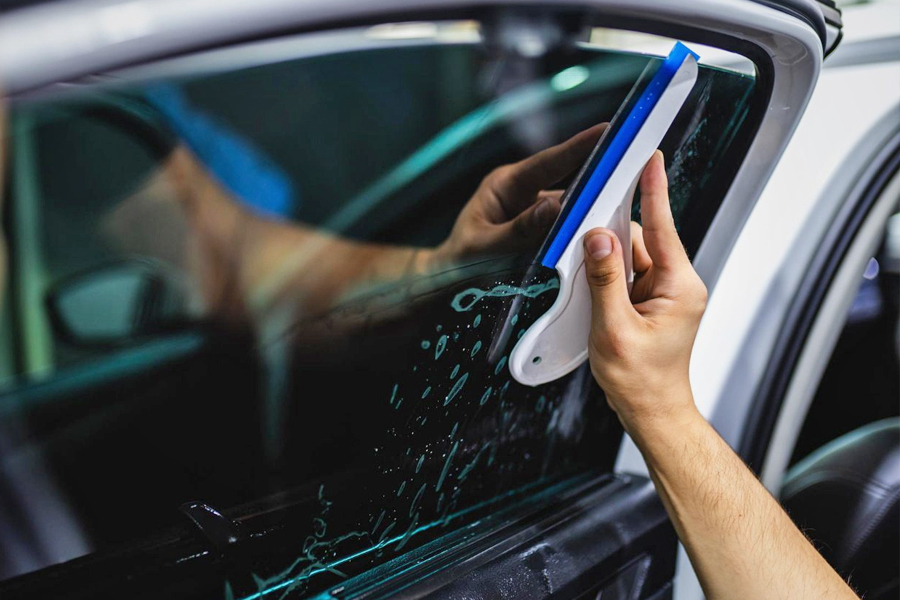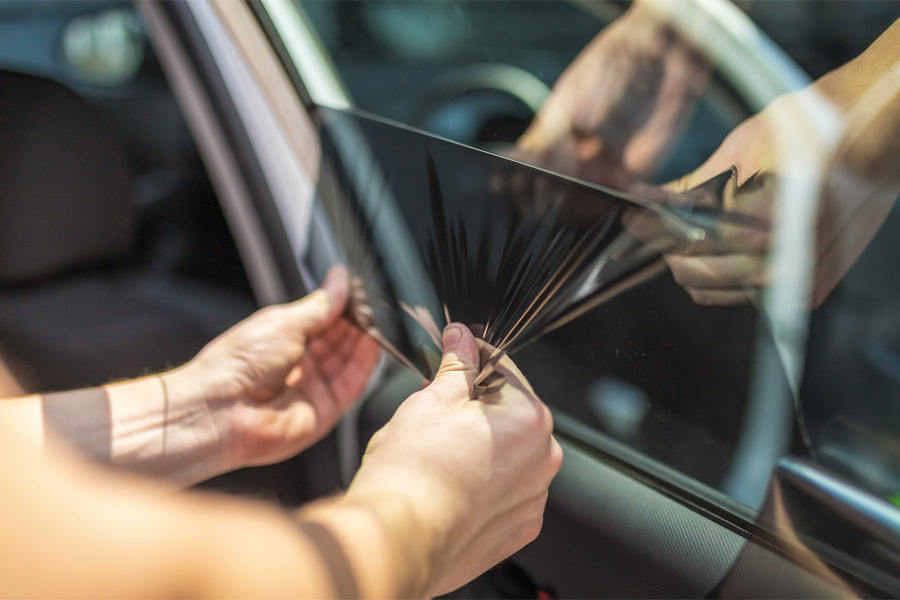Premier Auto Window Tinting Solutions in Your Location
Home Window Tinting Rules and Standards: What You Need to Know Prior To Tinting Your Car
Prior to proceeding with home window tinting for your car, it is essential to familiarize yourself with the diverse legislations and guidelines that regulate this method throughout different states. These regulations dictate the permitted degrees of color darkness, often determined by noticeable light transmission (VLT) portions, and consist of particular stipulations for front windscreens aimed at guaranteeing roadway safety and security.
Overview of Home Window Tinting Regulations
Window tinting laws are regularly based on variant throughout different territories, mirroring local laws and safety and security considerations. These laws dictate the acceptable degrees of color darkness and reflectiveness on automobile windows, making certain that vehicle drivers maintain appropriate visibility while likewise shielding versus dangerous UV rays and heat.
Many regulations classify window tinting based upon the Visible Light Transmission (VLT) portion, which suggests the quantity of light that can travel through the home window. Typically, lower VLT percents represent darker tints. Regulations usually set apart in between the front, side, and back windows, with more stringent constraints used to the front windshield to boost security for both the motorist and various other road individuals.
In addition, some jurisdictions impose constraints on the reflectivity of the color, avoiding excessive glow that could impair exposure. Exemptions to these regulations may exist for individuals with details medical conditions requiring extra sunlight protection. Compliance with window tinting laws is crucial, as violations can lead to penalties, necessary elimination of the color, and possible rises in insurance coverage premiums. For that reason, it is essential for vehicle proprietors to familiarize themselves with neighborhood laws before waging window tinting installations.
State-by-State Tint Rules
Comprehending the particular home window tinting laws in each state is crucial for lorry proprietors seeking to follow the regulation. Each state in the U.S. has actually developed its very own set of regulations controling window tinting, which can differ significantly. These laws usually dictate the allowed levels of tint darkness, the sorts of home windows that can be tinted, and any kind of medical exceptions that might apply.
As an example, states like California have rigorous limitations on tint darkness for front home windows, while others, such as New Mexico, might permit darker tints. Furthermore, certain states mandate details visibility percentages for various windows, including the windshield, front side home windows, and back windows. It is essential for automobile proprietors to familiarize themselves with their state's legislations to prevent potential penalties or penalties.
Furthermore, some states may call for a certification sticker to be put on colored home windows, suggesting compliance with state laws. Failure to stick to these regulations not only risks legal repercussions but can also impact safety and exposure while driving. Car proprietors need to carry out detailed study or get in touch with neighborhood authorities to make certain full understanding and conformity with state-by-state color laws.
Allowed Tint Kinds and levels
Many vehicle proprietors might be stunned to learn that enabled tint degrees and kinds differ extensively across various states. Each state has established its very own laws relating to the allowable darkness and reflectivity of window color, usually gauged by Visible Light Transmission (VLT) portions. VLT refers to the quantity of light that can travel through the colored home windows; therefore, a lower percent shows a darker tint.

Moreover, the kinds of tint materials permitted can differ, with some states restricting mirror-like or metal surfaces. It is vital for vehicle proprietors to acquaint themselves with their state's certain regulations to guarantee compliance. Non-compliance can lead to penalties, obligatory elimination of the tint, or various other lawful effects, making it critical to recognize these laws before waging installment.
Medical Exceptions for Tinting
While not all states supply allocations for clinical exceptions pertaining to window tinting, those that do acknowledge the requirement for certain individuals to enhance visibility and comfort due to clinical problems. Different medical problems, such as lupus, skin cancer cells, and specific eye disorders, can render people specifically delicate to sunlight. Subsequently, these individuals might call for darker tints to shield themselves from damaging UV rays and glow.

It is essential to note that despite a clinical exemption, there might still be restrictions on the degree of tint allowed. Conformity with state regulations makes sure that people are both safeguarded and within lawful limits. Those thinking about medical exemptions ought to call their neighborhood Department of Electric motor Autos or equal authority to recognize the procedures and demands needed to get an exception efficiently.
Charges for Non-Compliance
Stopping working to adhere to window tinting laws can lead to significant charges, which vary by state. Police are equipped to issue citations for automobiles that do not follow the specified tinting policies. These penalties normally consist of penalties, which can vary from moderate total up to numerous hundred bucks, depending on the seriousness of the violation and the state concerned.
In some territories, duplicated offenses may result in intensifying penalties or added charges, such as necessary court looks. In addition, non-compliance may necessitate the elimination of unlawful tinting, frequently at the proprietor's cost. In extreme instances, regular offenders might deal with suspension of their lorry enrollment until conformity is accomplished.
In addition, insurance policy effects may emerge from getting multiple citations for window tint violations. Insurers might watch such offenses as an indicator of riskier actions, possibly leading to boosted costs or trouble in insurance coverage.
To avoid these charges, it is vital for car owners to acquaint themselves with their neighborhood window tinting legislations and make sure that their lorry complies (Window Tinting). This aggressive technique visit the website not only prevents legal implications yet likewise advertises road security
Final Thought

A lot of laws classify window tinting based on the Visible Light Transmission (VLT) percent, which shows the amount of light that can pass with the home window. Conformity with window tinting regulations is important, as violations can result in fines, obligatory removal of the tint, and prospective rises in insurance policy premiums.Recognizing the details home window tinting regulations in each state is crucial for automobile owners looking for to comply with the law. These policies frequently dictate the allowable levels of color darkness, the types of windows that can be tinted, and any type of clinical exceptions that might use.
For instance, states like California have rigorous restrictions on color darkness for front home windows, while others, such as New Mexico, might enable darker tints.